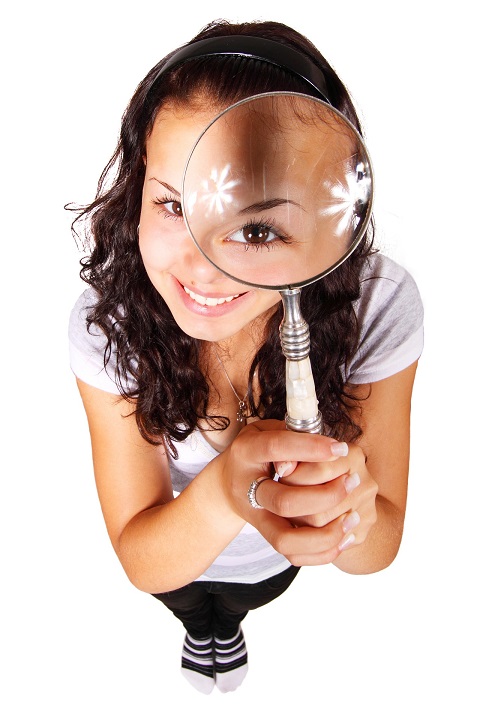Press Release
WHAT IS THE DEFINITION OF EXPOSURE?
One of the most important words in photography is exposure. When you click the shutter button on a camera,
|
FOR IMMEDIATE RELEASE |
04/03/2022 |
the aperture is opened, and light floods in, causing a sensor reaction. The quantity of light that enters your camera's sensor and creates visual data over time is known as exposure. That time span might range from fractions of a second to hours.
It's a balancing act to get the correct exposure. Overexposure results in overexposed highlights and photos that appear faded. Images that are underexposed are dark and difficult to see. Learn these fundamentals to gain a better understanding of camera exposure and how to achieve the best exposure for your work.
The triangle of exposure
There is no one exposure setting on a camera. The exposure triangle is made up of three separate data parameters that make up exposure. Shutter speed, aperture, and ISO are the three parameters.
Shutter speed - Shutter speed is the amount of time the camera's shutter is open, and it determines how long the exposure is. Shutter speeds in modern cameras are measured in fractions of a second. 1/1000 to 1/200 of a second are common shutter speeds for daylight photography. Shutter speeds that are appropriate for different lighting conditions vary.
If there isn't much light, you'll probably want to use a slower shutter speed. In low-light situations, if you set up your camera properly, you can still produce well-exposed and well-lit photos. Some photographers keep their shutter open for a few seconds at night. Long exposure photography allows the photographer to hold the shutter open for many minutes or even hours. Remember that the longer you leave a shutter open, the more likely you are to have motion blur. Tripods are excellent instruments for reducing motion blur.
Shutter speeds that are faster are better for capturing quick motion. A shutter speed of 1/400 or quicker is required if you're photographing an event and want to capture natural emotions of people conversing. You'll want to use a very rapid shutter speed if you're photographing anything even faster-paced, such as sports. Photographers capturing ephemeral moments of athletes in action, for example, may only keep their cameras open for 1/1000 of a second to capture the precise moment when a basketball player performs a slam dunk.
Aperture - Aperture is a lens aperture that may be adjusted to influence the quantity of light that enters the camera. It works similarly to the pupil of a human eye, which dilates to allow light in and narrows under bright conditions. An f number, commonly known as an f-stop, is the unit of measurement for your aperture setting. The larger the aperture, the lower the f number, and vice versa. A smaller aperture, such as f/8, would open considerably wider and allow in more light, but an aperture of f/2 would open much wider and let in much more light.
A food photographer could use a large aperture to get a shallow depth of field, in which the subject is sharp but the backdrop is fuzzy. Consider a slice of cake that appears crisp and clear, but the plate edge directly behind it is hazy. Landscape photography, for example, would benefit from a broader depth of field since everything from adjacent trees to distant mountains seems sharp, in focus, and clearly defined.
ISO - The sensitivity of the camera's light sensor is represented by ISO. Low ISO indicates that the camera's sensor is less sensitive to light, whereas high ISO indicates that it is more sensitive. Increased sensitivity isn't necessarily a good thing. Higher ISO in proportion to shutter speed or aperture might result in grainy images that are packed with digital noise. A shot will be underexposed if the ISO is set too low.
The term "ISO" used to relate to film rather than cameras. Different films were sensitive to light in different ways, and ISO provided a technique to measure that sensitivity. Although you may still choose your ISO on film, ISO is now more closely related with the modifications you can make with digital cameras.
When you want to capture activity, ISO comes into play. Let's imagine you have a small aperture, say f/16, but you still don't have enough light in your picture. That's when you'll want to increase the ISO.
Focal length and depth of field - The distance at which objects in a photograph remain sharp and in focus are not part of the exposure triangle, they can influence how you alter other settings. At closer distances, objects with a shallow depth of field become blurrier. The focal length of a lens is the distance between its centre and the camera's sensor. The focal length of a lens is its name, because shorter focal lengths may capture wider scenes.
Examine the histogram for exposure
Mirrorless and DSLR cameras include a tiny LCD screen that shows you a preview of the shot you just took after you take it. You might not be able to discern if a photograph is correctly exposed in that short preview. As a result, DSLR and mirrorless cameras may display a histogram, which is a graphical representation of exposure data.
A histogram does not have a single perfect form. They are situational and subject-specific. Even if both images have the identical exposure settings, a shot of a black cat in a dark location will have a different histogram shape than a photograph of a white rabbit on a snowy field.
How do you acquire the correct amount of exposure?
Your gear, editing style, and willingness to practise all play a role in getting the right exposure.
Aperture priority, shutter priority, and manual mode - Aperture and shutter priority settings are available on many contemporary cameras. You may set the aperture or shutter speed using these, and the other settings will change to suit them for optimal exposure. Even experts employ aperture priority, shutter priority, auto-mode, and other pre-existing settings.
Shooting in manual mode, in which you control all of the exposure triangle's elements, allows for more creativity, control, and a better grasp of the triangle. When you shoot in manual mode, you have more control over light and shadow, as well as other elements like depth of field.
Equipment for acquiring the appropriate exposure - Any job that necessitates a lengthy exposure period also need the use of something to keep the camera stable. Use a tripod to reduce camera shake while using a slower shutter speed. To get the look you want when photographing the night sky with an exposure time that stretches into the seconds, you'll need a tripod or similar piece of equipment.
A light metre is a device that detects and measures light. Many DSLR cameras have one built in, but depending on the level of precision necessary, you may need another. Using a light metre rather than merely eyeballing it can help you fine-tune your exposure settings.
Exposure and post-production - In post-production, you may also alter exposure. To make modifications, use the Adobe Photoshop Lightroom exposure slider. With a range of sliders, you may brighten and fix underexposed photographs. Overexposed photographs have fewer data, therefore there's less room for adjustment.
Practice - Getting the proper exposure for your images is ultimately a matter of practise. Take pictures in various lighting settings. Take pictures of items that are moving at different rates. Experiment with various areas of the exposure triangle to see which settings and conditions produce the best results.
Tags:
Local Listings |
|
---
Organisation Profile:
Car Services in Reading is a car repair and maintenance company which came into existence in 2001. We wanted to change the perspective of customers towards car maintenance.
We have extremely skilled 50+ employees, who work in different departments of our company. Each department has its own experienced employees who work for the betterment of the company.


